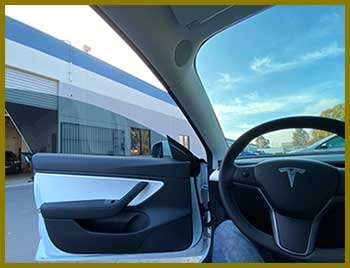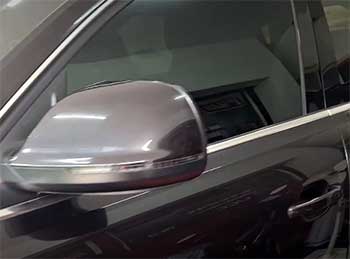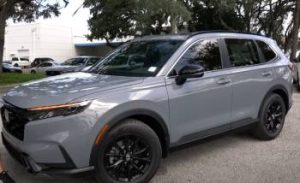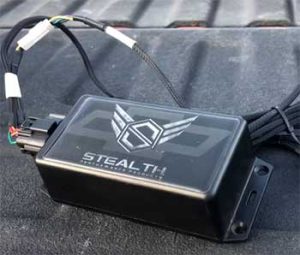Automotive window tinting has come a long way since its inception. From the classic dyed window films to the technologically advanced Photosync and ceramic tints, there are many options available for car owners today.
This article will delve into the world of Photosync and ceramic tints, comparing their features and benefits to help you make the best choice for your car.
A Brief Comparison Table
| Feature | PhotoSync Tint | Ceramic Tint |
| Heat Rejection | Up to 79%, adaptive based on sunlight | Up to 70%, constant |
| UV Protection | Blocks 99% of UVA and UVB rays | Blocks 99% of UVA and UVB rays |
| Glare Reduction | Adaptive based on sunlight intensity | Constant glare reduction |
| Signal Interference | Minimal interference | No signal interference |
| Aesthetics | Dynamic appearance, changes with sunlight | Sleek and sophisticated, constant tint |
| Durability | Up to 10 years | Up to 10 years |
| Warranty | Comprehensive warranty available | Comprehensive warranty available |
A New Age of Tinting: PhotoSync Tint

Photosync tint is a revolutionary window film that has taken the market by storm.
This cutting-edge product uses solar adaptive nano-coating technology, which allows it to adjust its tint based on the intensity of sunlight.
When the sun is bright, Photosync tint darkens to provide maximum heat rejection and glare reduction.
As the sunlight fades, the tint becomes lighter, ensuring optimal visibility and comfort.
Tried and Tested: Ceramic Tint
Ceramic tint, on the other hand, has been a popular choice among car owners for years. It is made of high-quality ceramic particles that are non-conductive and non-metallic.
The ceramic particles are embedded within the film, providing excellent heat rejection, UV protection, and glare reduction. Ceramic tints are known for their durability, color stability, and signal interference-free performance.
Also Read: Differences Between Avery Dennison And XPEL PPF.
Comparing PhotoSync And Ceramic Tint
- Heat Rejection
When it comes to heat rejection, Photosync tint is the clear winner. Thanks to its solar adaptive technology, it can reject up to 79% of solar heat, depending on the intensity of the sunlight.
Ceramic tint is no slouch either, with heat rejection capabilities of up to 70%. However, its heat rejection remains constant and does not change based on sunlight intensity.
- UV Protection
Both Photosync and ceramic tints offer exceptional UV protection, blocking 99% of harmful UVA and UVB rays. This protects not only you and your passengers but also your car’s interior from fading and damage due to prolonged sun exposure.
- Glare Reduction
Glare reduction is another area where Photosync tint shines. Its ability to adapt to sunlight intensity means that it provides optimal glare reduction at all times.
Ceramic tint also reduces glare, but its performance remains constant, regardless of sunlight intensity.
- Signal Interference
Ceramic tint is well-known for being signal interference-free. This means that it does not affect the performance of electronic devices such as GPS, cell phones, and radios.
Photosync tint is also designed to minimize signal interference, but there may be some instances where a slight interference occurs.
- Aesthetics

In terms of aesthetics, Photosync tint has a unique edge.
Its adaptive nature allows it to change color based on sunlight intensity, giving your car a dynamic appearance.
Ceramic tint, while offering a sleek and sophisticated look, does not change color.
- Durability and Warranty
Both Photosync and ceramic tints are highly durable, with a lifespan of up to 10 years.
They are also backed by comprehensive warranties, ensuring that your investment is well protected.
Why Is Ceramic Tint Better?
Ceramic tint is considered better than other types of tint, such as dyed or metallic, for several reasons:
- Heat Rejection: Ceramic tint offers superior heat rejection compared to other types of tints due to its non-conductive and non-metallic ceramic particles.
- UV Protection: Ceramic tint blocks up to 99% of harmful UVA and UVB rays, protecting you, your passengers, and your car’s interior from sun damage.
- Glare Reduction: The high-quality ceramic particles in the film help reduce glare and improve visibility.
- Signal Interference-Free: Unlike metallic tints, the ceramic tint does not interfere with electronic devices such as GPS, cell phones, and radios.
- Color Stability: Ceramic tints are known for their excellent color stability, ensuring a sleek and sophisticated appearance throughout their lifespan.
Also Read: Differences Between Gray And Green Tint.
Frequently Asked Questions (FAQ)
No, Photosync tint is not a ceramic tint. It uses a solar adaptive nano-coating technology to adjust its tint based on sunlight intensity, while a ceramic tint is made of ceramic particles embedded within the film.
Yes, there is a visible difference between ceramic and regular tint. Ceramic tint has a more sophisticated and premium appearance compared to regular tint, which may have a purple or green hue over time. Additionally, ceramic tint offers better heat rejection and UV protection.
Yes, ceramic tint is better than regular tint at night. While both types of tint provide glare reduction, ceramic tint’s constant performance ensures consistent visibility and comfort, regardless of the time of day. Photosync tint, on the other hand, lightens as sunlight fades, making it equally suitable for nighttime driving.
Both ceramic and crystalline tints have their advantages. Ceramic tint is known for its excellent heat rejection, UV protection, and glare reduction, while crystalline tint is recognized for its superior clarity and near-invisible appearance. The choice between the two depends on your priorities and personal preferences.
The Verdict
When it comes to choosing between PhotoSync and ceramic tint, the decision ultimately depends on your priorities and preferences. If you value cutting-edge technology, dynamic appearance, and maximum heat rejection, Photosync tint is a clear choice.
However, if you prefer a consistent performance, sleek aesthetics, and excellent heat rejection without the adaptive feature, ceramic tint is the way to go.
Both options offer exceptional UV protection, glare reduction, and durability.
Regardless of your choice, investing in high-quality window film will not only enhance your car’s appearance but also protect you and your passengers from the sun’s harmful effects.



